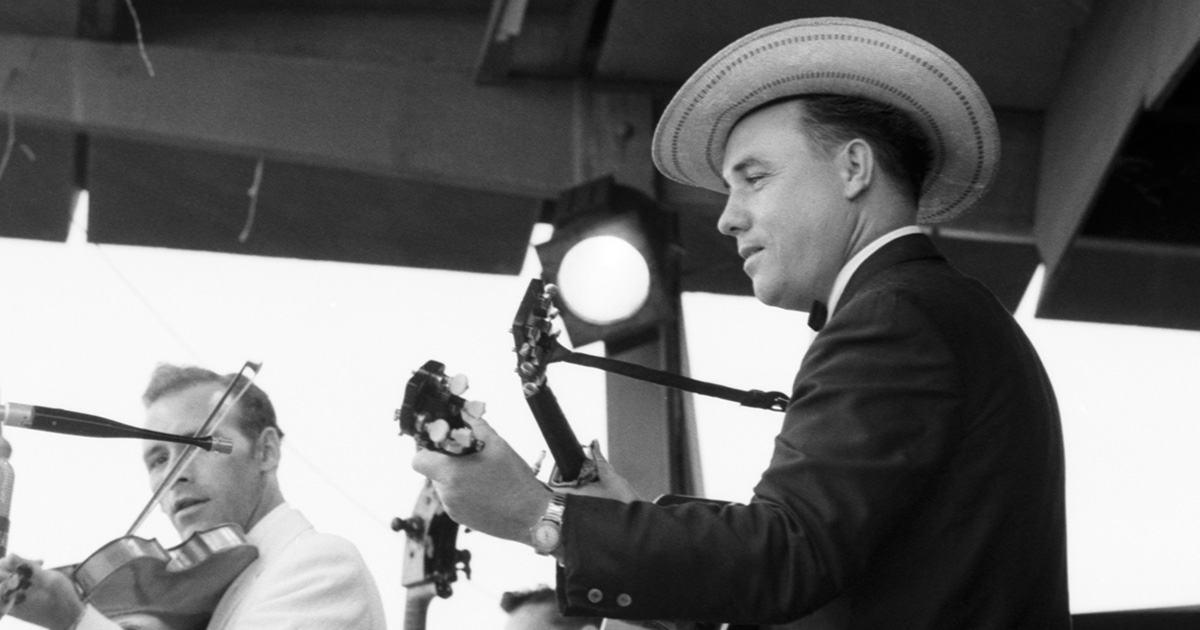
Fortune, Coincidence, and Karma: The Return of Dylan’s Guitar
Music is made up of moments, and some moments turn into legends. Arguably the most legendary is “Dylan Goes Electric.” Three words that came to connote breaking free of confines, taking artistic risks, thumbing your nose at the man, etc. A parable where the axis of music could be flipped, a big bang moment, a flashpoint demarcation. There was before Bob Dylan plugged in at Newport Folk and after, and music would never be the same.
While this tale has been told, examined, fictionalized, deconstructed, dissected and resurrected so many times, we are here to tell our own modern lore of how a missing relic, the literal instrument of change, magically found its way back to the festival 50 years later. The talisman in question: a 1964 three-tone sunburst Stratocaster with a maple neck, rosewood fingerboard, three single coil pickups, nickel tuners, white plastic knobs, and a white plastic pickguard. Yes, the very guitar Mr. Zimmerman purchased specifically for the occasion mere months before the 1965 Newport Folk Festival, in full mint condition including complete the original decal on the headstock, through a maze of fortune, coincidence, and karma came to the fort in 2015 to once again make history at Newport.
This is that story.

Photo by David Gahr
The Stratocaster is the same guitar preferred by so many guitar players and it’s not surprising that one of rock’s other most iconic performances – Jimi Hendrix’s Star Spangled Banner at Woodstock – was performed with the same model instrument. Put another way, if you’re going electric in the ’60s, this is the guitar you choose.
After Dylan’s storied performance, where fans booed, chaos ensued, and history was made, he took off from Rhode Island in a private plane. It was then that the story of his guitar took its next turn. After the flight, the pilot Victor Quinto, found the guitar onboard. Dylan had left it behind. Intentionally or unintentionally, we, of course, don’t know.
Quinto tried to return the Strat but wasn’t successful. It was only decades later after he passed, when his daughter, Dawn Peterson, was watching a documentary about Dylan’s performance and recognized the instrument, thinking it was the same one stowed away at her home. Turns out…it was.
Peterson brought the guitar to auction where it was sold to an unknown bidder for just shy of $1m, and that’s when the story takes us back to Newport.

In 2015, Newport producers knew they wanted to pay tribute to Dylan on the 50th anniversary of his seminal performance. He was the first one invited to play the festival that year (as he is every year, believe it or not) and politely declined. That meant a blank canvas, so Newport tapped David Rawlings and Gillian Welch to help curate and assemble 65 Revisited, a performance that would pay tribute to Dylan’s electric set.
Around the same time, a mysterious voicemail was left on the answering machine at Newport Folk HQ. “We have Dylan’s guitar,” it said essentially. “Let’s talk.” Was it real? At this point, the winner of the auction was anonymous, so there was some skepticism about the legitimacy of the call.
After some due diligence, Newport Folk Producer Jay Sweet was on the phone with Indianapolis Colts owner and guitar collector Jim Irsay. Irsay secured Dylan’s guitar at auction and wanted to see it played again at Newport. A simple, and welcome, twist of fate.
The guitar would come with a handler and be stage-ready. Along with being played in the 65 Revisited set, Newport producers decided to interview a few artists playing that year about what Dylan’s performance meant to them. They’d capture it all on tape and surprise the artists with the very guitar, inviting them to play anything they wanted for posterity.

Jason Isbell
“It’s in amazing condition. It’s like a time capsule.”
Blake Mills, Jason Isbell, Courtney Barnett, Andrew Hozier-Byrne, J Mascis, Taylor Goldsmith, and MC Taylor were among the musicians tapped to play Dylan’s guitar for the Behind the Walls video series.The mystique of the instrument was palpable, and it immediately conjured questions about Dylan, the history of music, culture, and the guitar itself.
“It’s so crazy how new and clean it is,” said Taylor Goldsmith of Dawes, when presented with the guitar. “Maybe he thought people were booing the guitar, that’s why he didn’t want it back.”
A near-speechless Jason Isbell took a moment to examine the Strat. “It’s in amazing condition,” said Isbell. “It’s like a time capsule.”

Blake Mills
“To me, [Bob Dylan] is a torch and an example of a lot of bravery. People are afraid that he’s going to do something and that they’re not going to like it… I just marvel at that guy’s strength.”
Joining David Rawlings and Gillian Welch during the set, which took direct inspiration from Dylan’s 1965 setlist, was Hozier, Willie Watson, Deer Tick, First Aid Kit, Dawes, Robyn Hitchcock, the Preservation Hall Jazz Band, and Al Kooper, who played keyboard with Dylan in 1965 at Newport. No boos this time.
50 years later, the electric relic had been unearthed and properly canonized, and the songs had returned. After the set, the guitar tech who brought Dylan’s Stratocaster from some undisclosed location, and so carefully handled it with white gloves during the Festival, packed it up and quietly disappeared into the evening. “The gypsy was gone.”

Photo by Nina Westervelt

